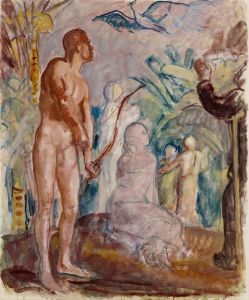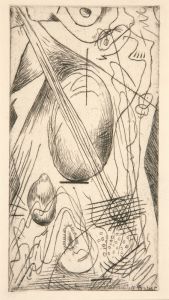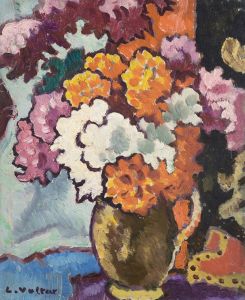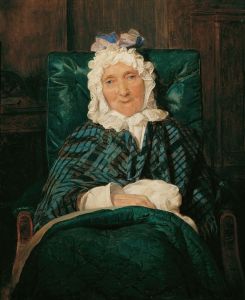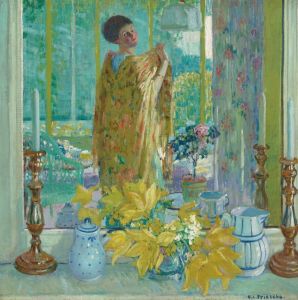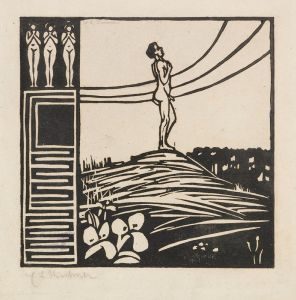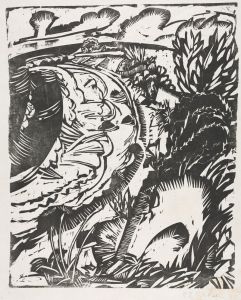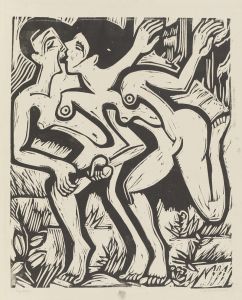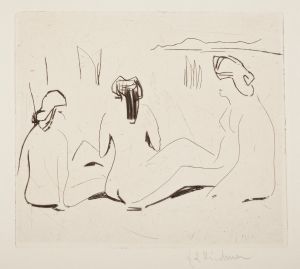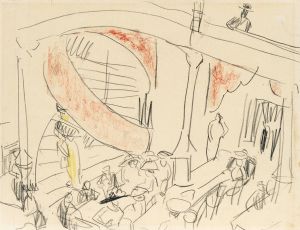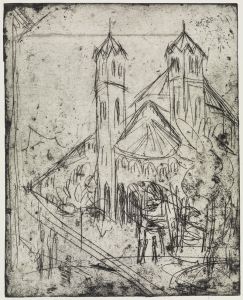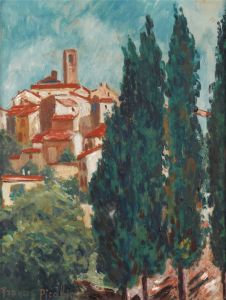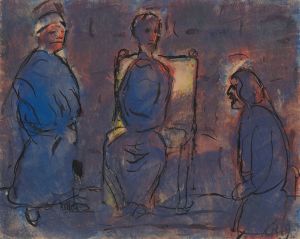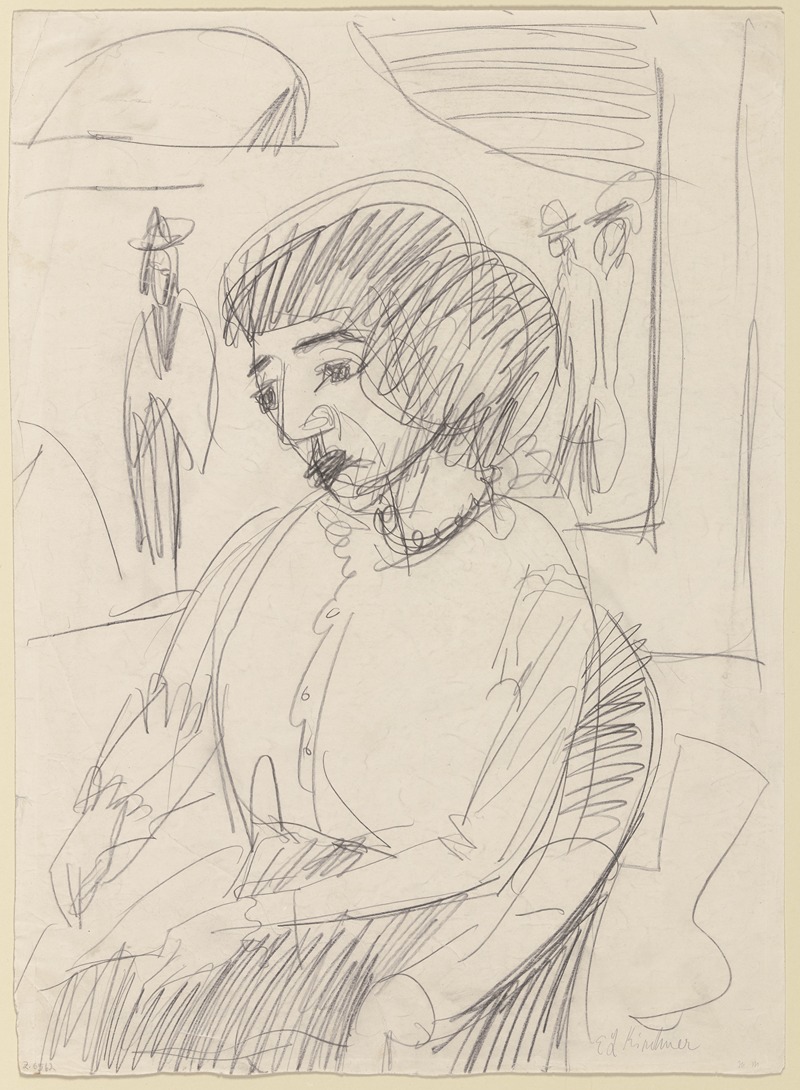
Bildnis einer Frau im Sessel
A hand-painted replica of Ernst Ludwig Kirchner’s masterpiece Bildnis einer Frau im Sessel, meticulously crafted by professional artists to capture the true essence of the original. Each piece is created with museum-quality canvas and rare mineral pigments, carefully painted by experienced artists with delicate brushstrokes and rich, layered colors to perfectly recreate the texture of the original artwork. Unlike machine-printed reproductions, this hand-painted version brings the painting to life, infused with the artist’s emotions and skill in every stroke. Whether for personal collection or home decoration, it instantly elevates the artistic atmosphere of any space.
Ernst Ludwig Kirchner, a prominent German expressionist painter and one of the founding members of the influential art group Die Brücke, created the painting "Bildnis einer Frau im Sessel" (Portrait of a Woman in an Armchair). This artwork exemplifies Kirchner's distinctive style, characterized by bold colors, dynamic compositions, and expressive forms, which were central to the expressionist movement that sought to convey emotional experiences rather than physical reality.
Kirchner was deeply influenced by the rapid changes in society and the urban environment of the early 20th century. His works often reflect a sense of immediacy and emotional intensity, capturing the psychological states of his subjects. "Bildnis einer Frau im Sessel" is no exception, as it portrays a woman seated in an armchair, rendered with Kirchner's signature use of vivid colors and energetic brushstrokes. The painting showcases his ability to convey the inner life of his subjects through exaggerated forms and a vibrant palette.
The subject of the painting, a woman, is depicted in a relaxed yet introspective pose, suggesting a moment of contemplation or introspection. Kirchner's use of color is particularly striking, with contrasting hues that create a sense of depth and movement within the composition. The background and the armchair are painted in a way that complements the figure, enhancing the overall harmony of the piece.
Kirchner's work was part of a broader movement within German expressionism that sought to break away from traditional artistic conventions and explore new ways of representing the human experience. Die Brücke, the group he co-founded in 1905, played a crucial role in this artistic revolution, advocating for a more direct and unfiltered approach to art. The group's members were inspired by various sources, including non-Western art, which influenced their use of simplified forms and bold colors.
Throughout his career, Kirchner faced numerous challenges, including the impact of World War I and the subsequent political and social upheavals in Germany. Despite these difficulties, he continued to produce art that pushed the boundaries of expression and explored the complexities of modern life. His work, including "Bildnis einer Frau im Sessel," remains influential, reflecting the tensions and transformations of the early 20th century.
Kirchner's legacy is marked by his contribution to the development of modern art, particularly through his exploration of color, form, and emotion. His paintings are celebrated for their ability to capture the essence of the human condition, making them timeless pieces that continue to resonate with audiences today. "Bildnis einer Frau im Sessel" is a testament to Kirchner's skill as an artist and his commitment to expressing the depth and complexity of human emotions through his work.





